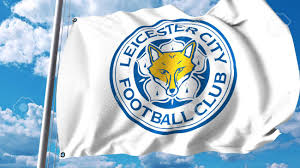By David Owen
March 4 – Leicester City tumbled into the red last year as the Thai-controlled club sought to rebuild the squad that carried it to a gloriously unexpected Premier League title in 2015-16.
The Foxes, seemingly well set for a return to the Champions League next season under manager Brendan Rodgers, posted a pre-tax loss of £20.2 million for the year to end-May 2019. This came on turnover up nearly £20 million to £178.4 million.
With clubs now having to look beyond their Premier League TV income for appreciable top-line growth, this hike was said to have been driven mainly by commercial revenue. This more than doubled from the year-earlier level to £29.9 million.
As well as squad turnover, the club attributed its loss to the development of a new training facility in Charnwood and planning and design work related to a proposed expansion of its home stadium, popularly known as the King Power.
It said the “transformational” training-ground investment had been financed after the year-end via a six-year £91 million construction facility with King Power International. Further capital investments had been supported through the “planned utilisation of other financing facilities available to the club”. It said that since the year-end, the club had invested £47.2 million in its facilities.
The accounts show that, at the year-end, bank loans and overdrafts had surged to £55.65 million from just £151,000. Most of this was from Macquarie Bank, with interest set at between 2.8% and 3.75%.
While the period under review saw the big-money departure for Manchester City of star winger Riyad Mahrez, it also brought a string of pricey arrivals. These were headed by England prospect James Maddison and Portuguese wing-back Ricardo Pereira.
The club also took the opportunity to import a notably mobile centre-back pairing in the shape of Caglar Söyüncü from SC Freiburg of the Bundesliga and ex-Manchester United man Jonny Evans from another Midlands outfit, West Bromwich Albion. The duo have been instrumental in instilling a new solidity which, along with Jamie Vardy’s goals, Harvey Barnes’s flair and a skilful and energetic midfield engine-room have carried the side to third place in the table.
All told, the cash flow statement puts income during the year from player sales at £50.8 million, against spending on new signings of £90.6 million.
Employee costs rose sharply from £119 million to £149.5 million.
Susan Whelan, chief executive, assured supporters that the club was confident that “the best is yet to come”- a strikingly bold statement when you stop to think about it.
“We remain a club of fierce ambition,” she said. This was why “every penny of revenue” generated during a decade under ownership of the Srivaddhanaprabha family had been “reinvested into the club”.
The period covered the tragic helicopter crash in October 2018 that took the lives of chairman Vichai Srivaddhanaprabha and four others.
Contact the writer of this story at moc.l1714057364labto1714057364ofdlr1714057364owedi1714057364sni@n1714057364ewo.d1714057364ivad1714057364

